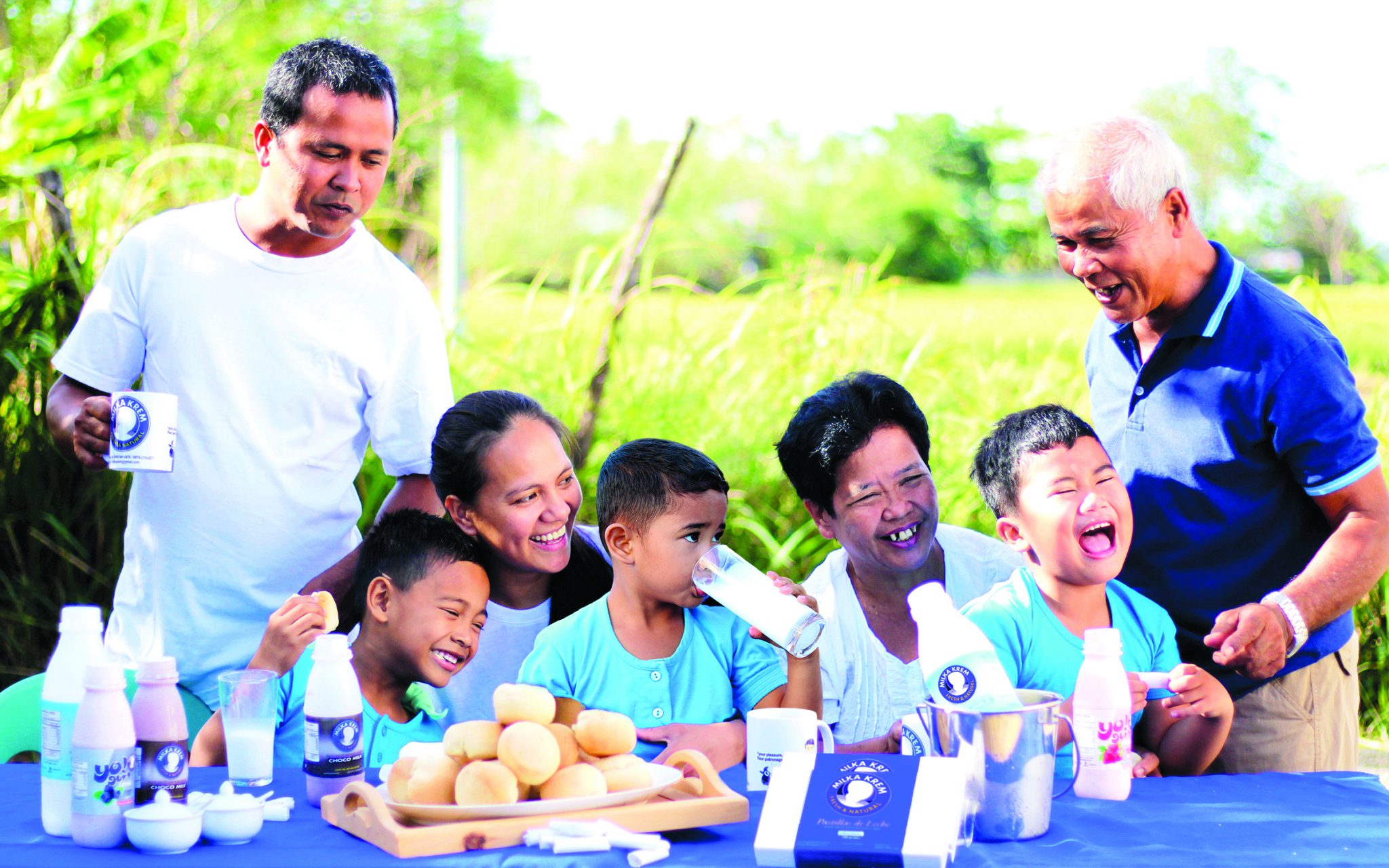Carabao dairying: Now a booming industry in PH landscape

Current developments in livestock concerns, particularly about an animal which in recent years was called the symbol of backwardness, all but point to a very exhilarating scenario. Among others, carabao (or water buffalo) dairying shines brightly today as a booming industry in the country’s landscape. Appreciate what took place recently at the Third National Carabao Conference at the Philippine Carabao Center headquarters in the Science City of Muñoz. The winners of the search for the outstanding dairy carabaos and the farmer-raisers were honored. One buffalo of the Brazilian breed was declared winner of the “Gintong Kalabaw Cup”. Her milk yield was up to 18 liters a day or a total of 3,364.5 liters in a ten-month lactation period. She provided an income of Php149,670 to her owner, Rogelio Marquez, of Quezon, Nueva Ecija. The other awardees were Henry Orbito of Calinog, Iloilo as “Outstanding Dairy Buffalo Farmer” (smallhold category), Victoriano Dumale of Licaong, Science City of Muñoz, “Outstanding Buffalo Farmer” (family module), Samuel Mercader of San Jose City in the semi-commercial category, and Emily Velasco of Villa Joson, San Jose City as “Modelong Juana sa Kalabawan” (model woman in carabao dairying). Patrick Pascual of Sto. Domingo, Nueva Ecija was awarded the “Modelong Kabataan sa Kalabawan” honors while the Eastern Multi-purpose Cooperative of San Jose City was bestowed the “best dairy cooperative” title. The Eastern Multi-Purpose Cooperative has 432 dairy carabaos in the hands of 60 members and had combined milk harvest of 145,099.65 liters in 91 lactating carabaos in one year (Php7,254,982.50 at Php50 per liter). It also runs its own milk processing plant and marketing outlet. Dumale and his family earned Php70,000 a month from their five dairy carabaos while Orbino grossed Php354,314.80 from the milk yield of his two carabaos. Mercader, who started raising a dairy carabao in 2000, has 32 carabaos of which 14 are mature females, one a senior bull, four are heifer, and nine are calves, earned more than enough to finance the education of four daughters, two of whom had graduated from their respective collegiate courses, acquired agricultural lands, house and lot, vehicles, farm equipment, and appliances. They became the cream of the crop, so to speak. Elsewhere in the country, several thousand more, speaks highly about their achievements in dairy carabao -raising and engaging in carabao-based industries. Re-engineering the carabao History says that among the fauna brought by the migrants to the country was the “swamp-type water buffalo” which was excellent for its draft power usability. Its cousin, the riverine-type, like those in the Indian continent, is excellent for meat and milk. In the Philippines, this animal was called “carabao”, probably from the Visayan or Cebuano word karabaw, the Malay word kerbau, and the Indonesian-Dutch word karbouw. In a study in 2002, the carabao’s contribution for draft, meat, hide, and milk, was valued at almost Php5 billion. But the carabao suffered misfortunes. More than a century ago, it was almost wiped out due to diseases, particularly rinderpest, and poor dietary supply. In World War II, about two million of its population was massacred as Japanese officials suspected it as being used by the Filipino guerrillas for transporting weapons and goods in aiding American soldiers. Their breed suffered, too. Indeed, the carabao population in the country dwindled due to natural and man-made causes. In terms of its breed and nutritional needs, the carabao generally declined in size and weight. From an average weight of 500 kilograms, it went down to 400 kilograms. But the due concern for the welfare of the carabao and for the benefits it can provide particularly to the farmers, became a major undertaking. Research and development efforts were mounted in 1973 then in 1981 when the “Strengthening of the Philippine Carabao Research and Development Center” project was implemented and above all, in 1992 when the “Philippine Carabao Act” (RA 7307) was enacted to “conserve, propagate, and promote the carabao as source of draft power, meat, and hide for the benefit of smallhold farmers.” Among others, that law provided for the establishment of PCC which has since undertaken myriads of ground-breaking programs, projects, and activities that catapulted the carabao to new heights resulting in the now new-found industry booming in the country – the carabao-based enterprises. Beast of fortune From its erstwhile moniker as “beast of burden”, the carabao has been labelled as the “beast of fortune”. “Over the years, we did not see the contribution of the carabao to local dairy production. Today, its contribution is more than 34 percent and is increasing,” said Dr. Arnel del Barrio, PCC executive director. The milk yields were from both the imported dairy buffaloes and from the crossbreds which are in the hands of the farmers. Documentations by the PCC showed many examples of dairy carabao cooperatives in different parts of the country which are succeeding in their endeavors, the advances made in life by individual farmers through dairying, the flourishing of carabao-based industries, the engagement of thousands of entrepreneurs in the carabao-based industry, and how agencies partnered in providing milk supplementation to undernourished school children and a sure market for the milk of dairy farmers. Stories also abounded about dirt-poor families who now own different vehicles, including expensive van, and other flourishing businesses spawned by their carabao-dairying ventures, of families who not only improved their houses, acquired appliances, motor vehicles but have supported easily the education of their children thru college. In the meantime, the population of the purebred and crossbred dairy buffaloes continue to increase as the PCC and its partner agencies, including the Village-based Artificial Insemination Technician (VBAIT), along with the PCC-supported multiplier farms, intensify their work. More to come “In terms of carabao meat, our carabao slaughter rate was formerly 11 to 12 percent but has gone up to 16 percent… The demand is increasing [and] the local carabao is contributing much to that [market],” Dr. Del Barrio said. He said the PCC is also establishing dairy carabao hubs as a well-oiled business marketing chain. He added that a value-chain analysis about carabao-dairying has been completed. It is a positive step in identifying problems in each of the links and applying the necessary corrective measures to keep the chain in carabao-dairying unbroken and very strong. Dr. del Barrio said that on top of the PCC’s R&D efforts, the “mother of all milestones” of the agency is about to come. “We now begin the count down for the birth of the Philippine Buffalo breed, one that is excellent for milk, meat and draft,” he declared. “The calves have now developed in the wombs of female animals and will come out soon,” he added. When that comes, the country will join the few countries in the world that have successfully bred their own dairy buffalo breed.











